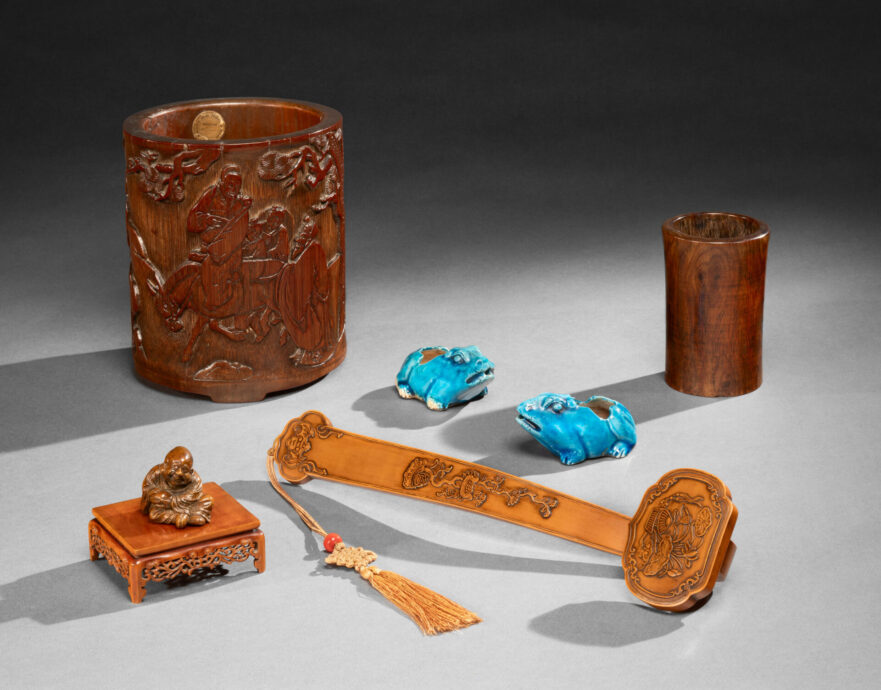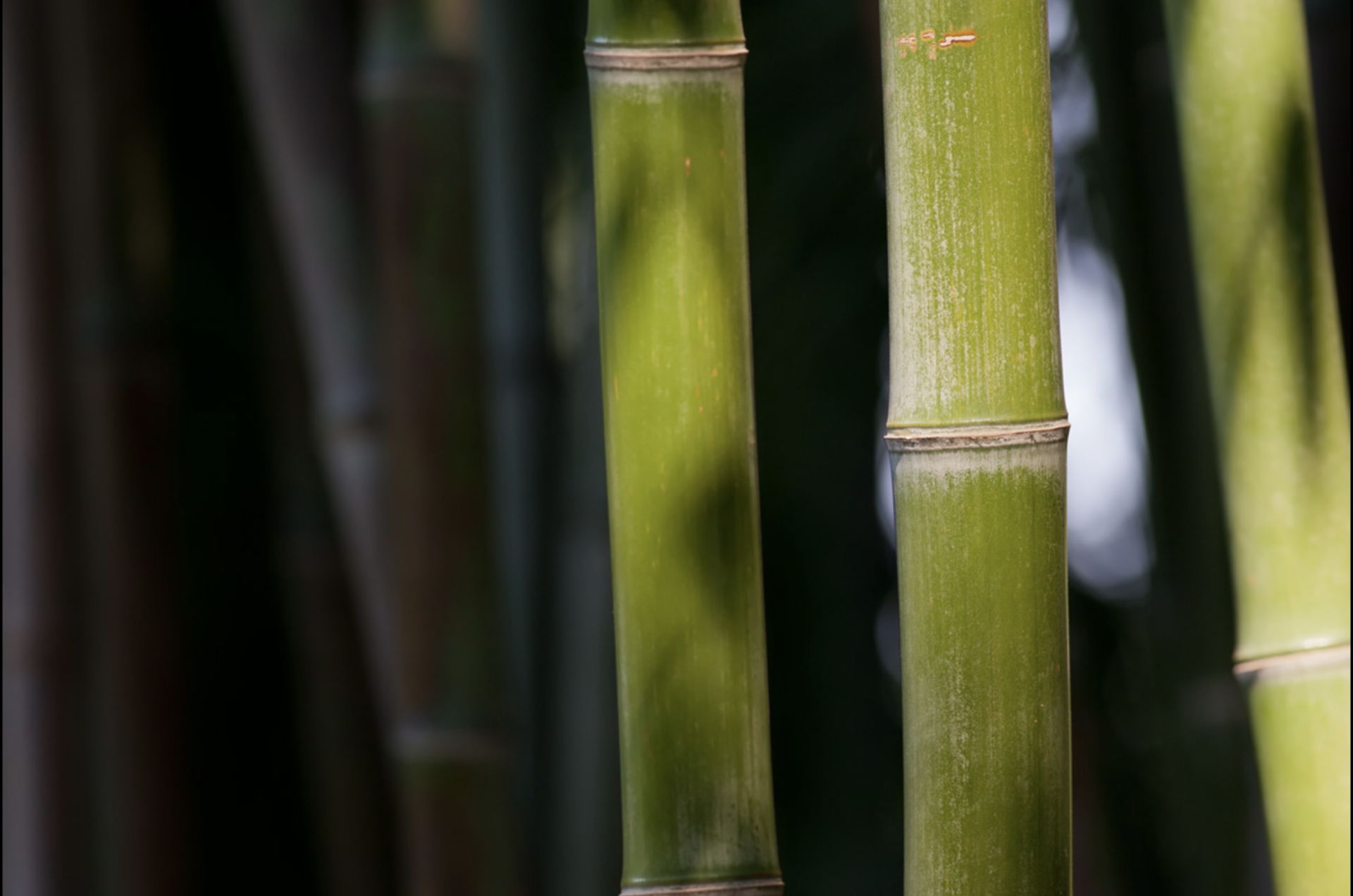Chinese bamboo carvings like other craftsmanship in China, are rich in history. With the largest bamboo forests and wildest distribution in the world, Chinese bamboo items were highly developed and prosperous in the Ming and Qing Dynasties. Bamboo, as a fast-growing plant, mainly grows in southern China like Sichuan, Hunan, and Zhejiang provinces. Every year during the winter season, carvers will meet and have a gathering to choose the best raw materials, then the process of drying could last a few years, it might take several months and sometime years to carve a masterpiece.
Bamboo is highly valued by Chinese Scholars since ancient times. It is believed to be a symbol of gentlemanly integrity (junzi), it contains various virtues that a Chinese gentleman required, such as strength, tenacity, humbleness, and nobility. Bamboo, plum blossom, orchid, and plum chrysanthemum are collectively regarded as the “Four Gentlemen”. The pine tree, bamboo, and plum blossom are also admired as “Three Friends of Winter”. Therefore, bamboo related artworks have always been an essential part of Chinese Scholars’ life. There is a saying that “Gentlemen can live a life without decent food but cannot live a life without bamboo”.
Bamboo carvings became an important factor of Scholars’ items. The popularity of bamboo carvings reached a peak during the Ming and Qing Dynasty (15th – 19th Century) with the prosperity of the literati class. The contents and functions of bamboo carvings became increasingly rich during that period. At the same time, the craftsmanship became more and more exquisite. However, due to the difficulties of storage, there are only a few bamboo carving antiques kept till today. The perfect pieces from Ming and Qing Dynasty became objects with high values which are very collectable.
Both of the bamboo root and branches are fine materials for art creation. The bamboo root carvings always make the best use of the natural curve of the root, carving them into vivid sculptures for displaying. While the branches are always carved into functional Scholars items, bamboo brush pot and wrist rest take advantage of the natural shape of the culm as well as the hollowed core of bamboo. Besides, incense holder, fan ribs, seal, flute, and shaped cups are also common themes of bamboo carving.
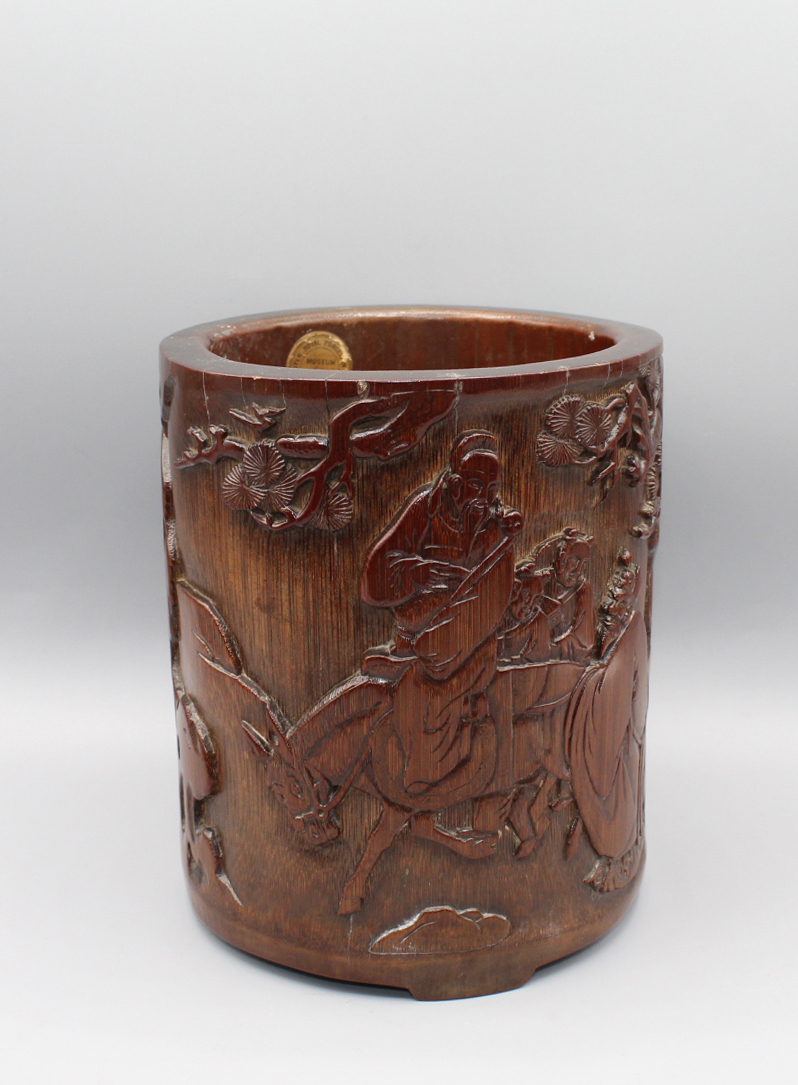
656 Chinese Bamboo Brush Pot 人物竹雕笔筒, Diameter: 14cm Height: 16.5cm Circa 1800
Artworks out of bamboo culms always have elegant surface carving. It is like painting on the surface of bamboo. Carving techniques basically can be differentiated as yinke (negative carving) and yangke (positive carving), depending if the carved panel is lower or higher than the surface. For example, the wrist rest decorated with a poem is a negative carving [625]and the brush pot depicting a Scholar on a horse is a positive carving [656].
Bamboo carvings represent the pursuits of Chinese scholars, symbolysing dignity and integrity. More importantly, the finely carved and perfect bamboo arts from the Ming and Qing Dynasty are rare objects with great collection values.
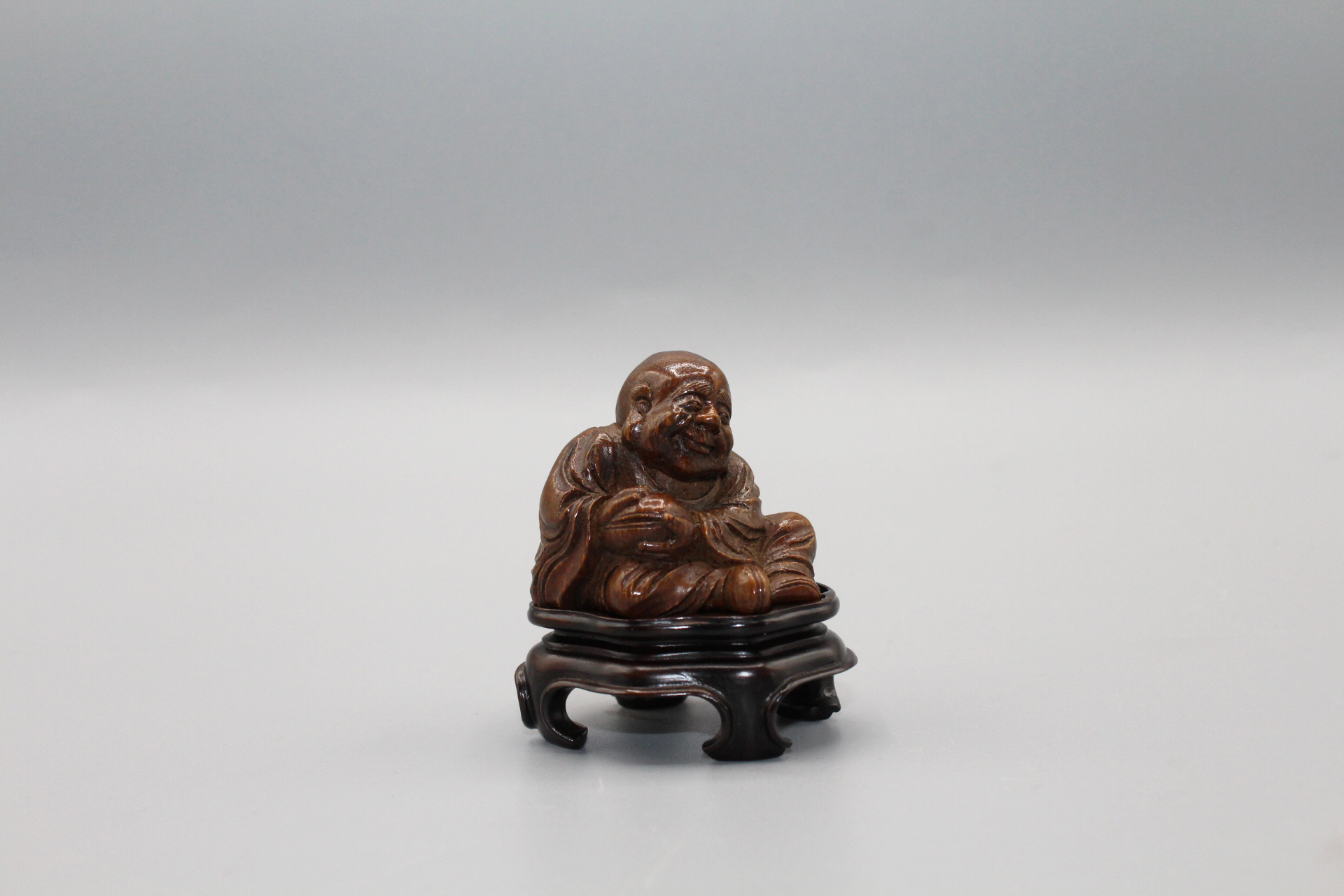
658 Chinese Finely Bamboo Luohan 竹雕弥勒罗汉像 Length: 4cm Width: 3.5cm Height: 3.9cm Qing Dynasty
Chinese artists also used a special technique where the exterior layer of the bamboo stalk is used to create a soft and smooth appearance resembling boxwood.
Such works were popular in the imperial workshop because of the appeal to the Qianlong Emperor.
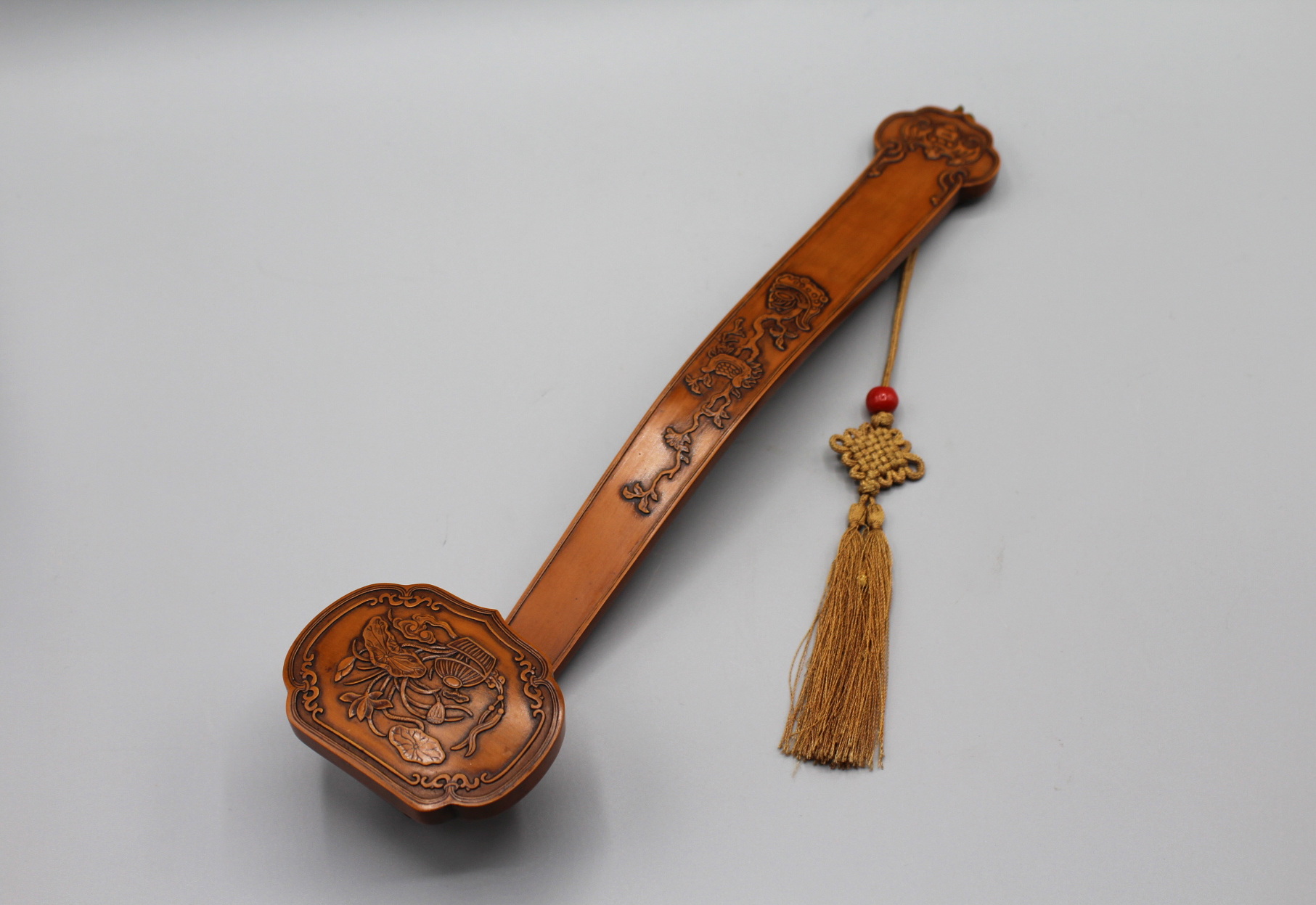
659 Unusual Chinese Bamboo Veneer Ruyi 竹黄福寿如意 Length: 30cm Width: 7.3cm 18th Century
You are very welcome to our gallery to find your perfect bamboo object to compliment or start your collection.
中国竹雕有着悠久的历史。 明清时期,中国竹业高度发达繁荣,拥有世界上面积最大分布最广的竹林。 竹子是一种速生植物,主要生长在四川、湖南、浙江等中国南方地区。 每年冬季,竹刻师们都会聚集在一起,挑选最好的原材料,然后干燥的过程可能会持续几年。竹刻师们可能需要几个月甚至几年的时间才能雕刻出一件杰作。
自古以来,竹子就受到中国文人的珍视。 竹被认为是君子气节的象征,包含了中国绅士所需要的各种美德,力量、坚韧、谦虚、高贵等。梅、兰、竹、菊并称“四君子”。 松、竹、梅也被誉为“岁寒三友”。 因此,与竹有关的艺术品一直是中国文人生活中不可或缺的一部分。 中古有句古话:“君子可食无肉,不可居无竹” 。
竹雕也因此成为文房珍玩的重要组成部分。 明清时期(15-19世纪)随着文人阶层的繁荣,竹雕的流行达到顶峰。 这一时期竹雕的内容和功能日益丰富。 与此同时,竹刻工艺也越来越精湛。 但由于保存困难,至今仅存世有极少量的竹雕古玩。 明清时期的完美竹雕成为具有极高收藏价值的物品。
竹根和竹枝都是艺术创作的上佳素材。 竹根雕总是充分利用根部的自然曲线,将其雕刻成生动的塑像来展示。 虽然竹枝总是被雕刻成功能性的文房用品,笔筒和臂搁利用了竹秆的自然形状以及竹子的中空核心。 此外,香炉、扇骨、印章、笛子、异形杯等也是竹雕常见的题材。
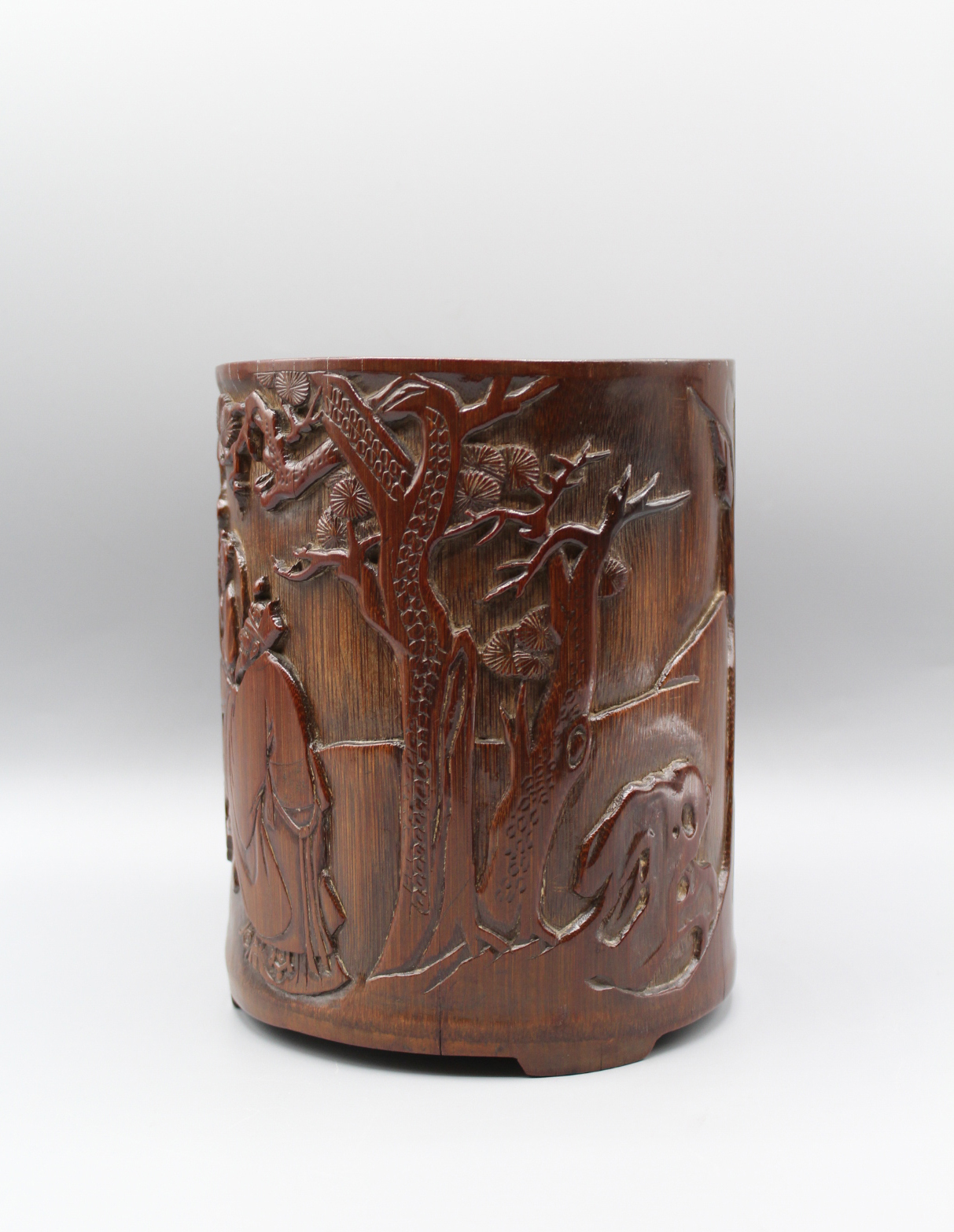
656 Chinese Bamboo Brush Pot 人物竹雕笔筒, Diameter: 14cm Height: 16.5cm Circa 1800
以竹秆为材料的工艺品,表面雕刻精美。 就像在竹子表面作画一样。 雕刻技术基本上可分为阴刻和阳刻,具体取决于雕刻的面板低于或高于表面。 例如,饰有诗句的腕托为阴雕,而刻画书生骑马的笔筒为阳雕。
竹雕代表了中国文人的追求,象征着尊严和气节。 更重要的是,明清竹艺雕刻精细、完美,是不可多得的珍品,极具收藏价值。
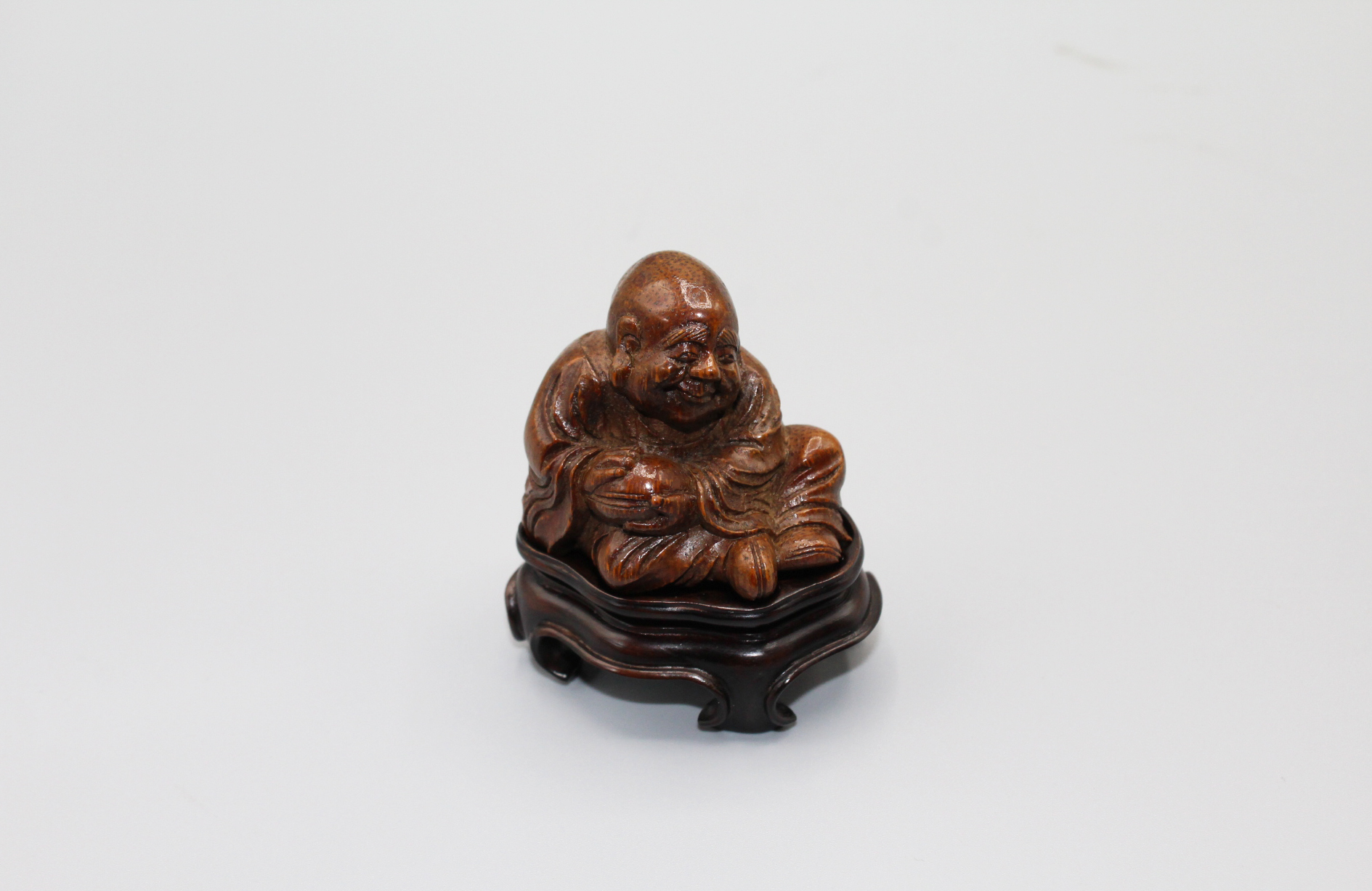
658 Chinese Finely Bamboo Luohan 竹雕弥勒罗汉像 Length: 4cm Width: 3.5cm Height: 3.9cm Qing Dynasty
中国艺术家还使用了一种特殊的技术,利用竹秆的外层创造出类似黄杨木的柔软光滑的外观。这类作品因而受到乾隆皇帝的青睐而在宫廷作坊中流行。
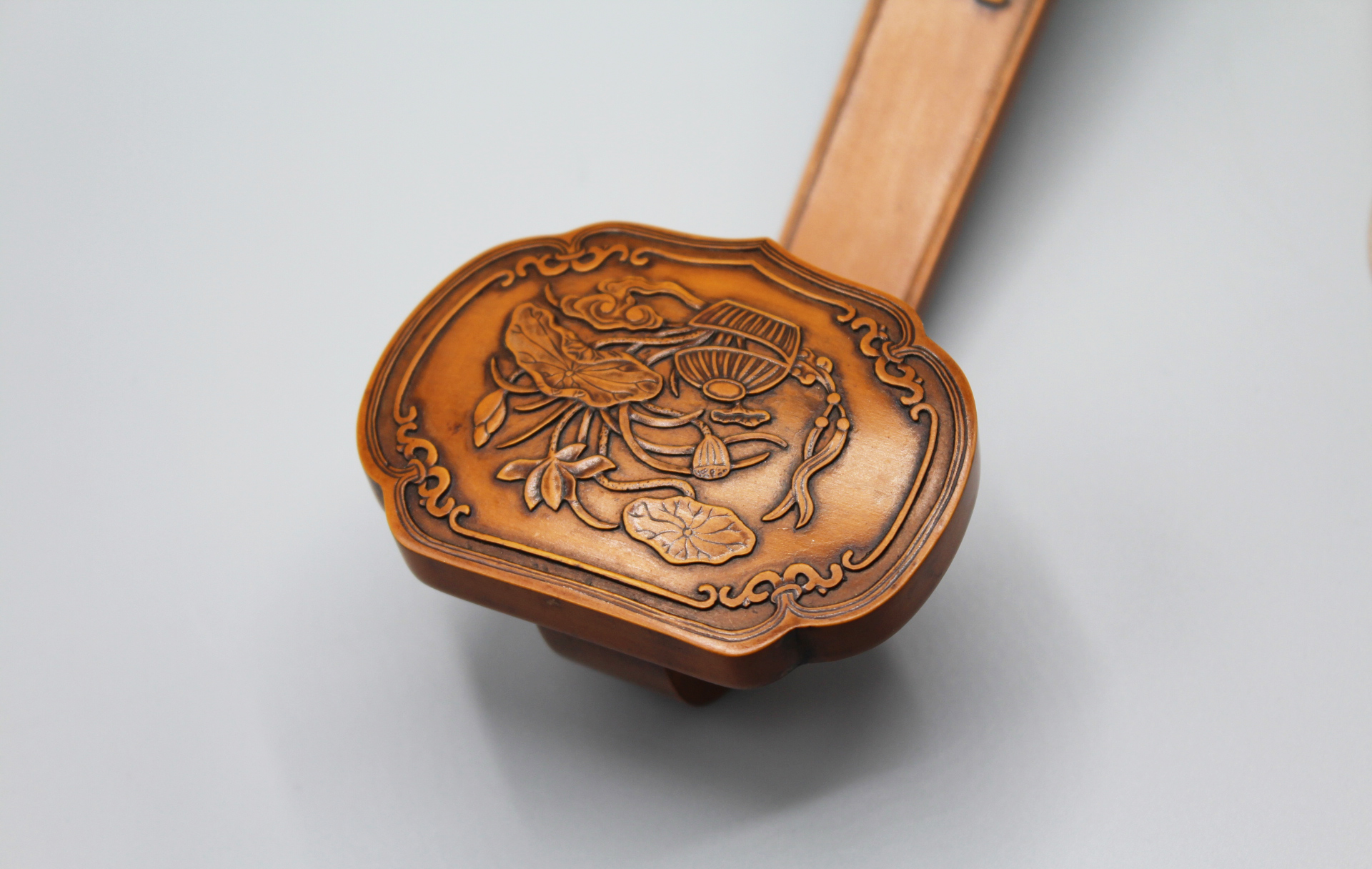
659 Unusual Chinese Bamboo Veneer Ruyi 竹黄福寿如意 Length: 30cm Width: 7.3cm 18th Century
非常欢迎您来到我们的画廊,寻找完美的竹雕艺术品,开始您的竹雕收藏之旅。

